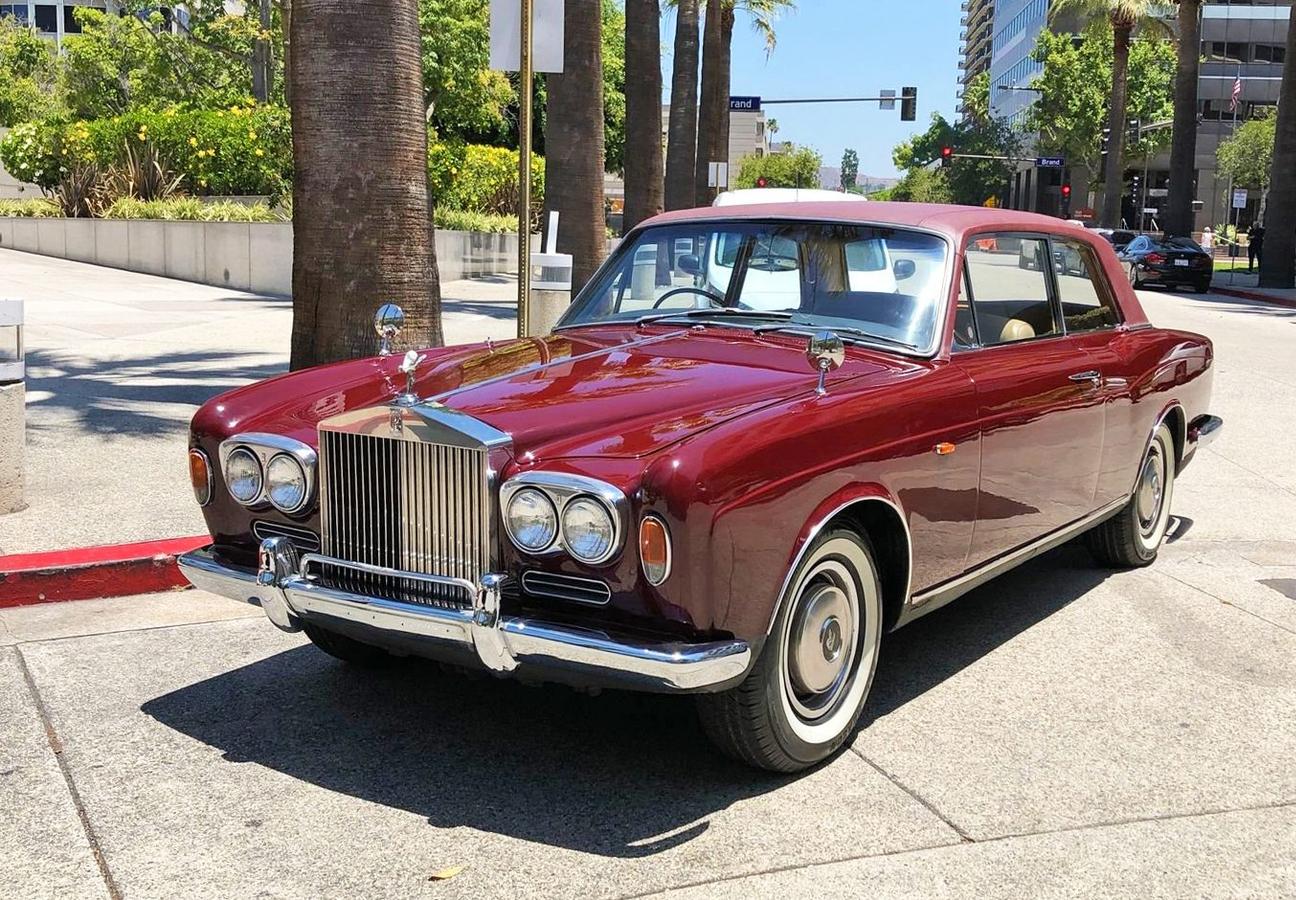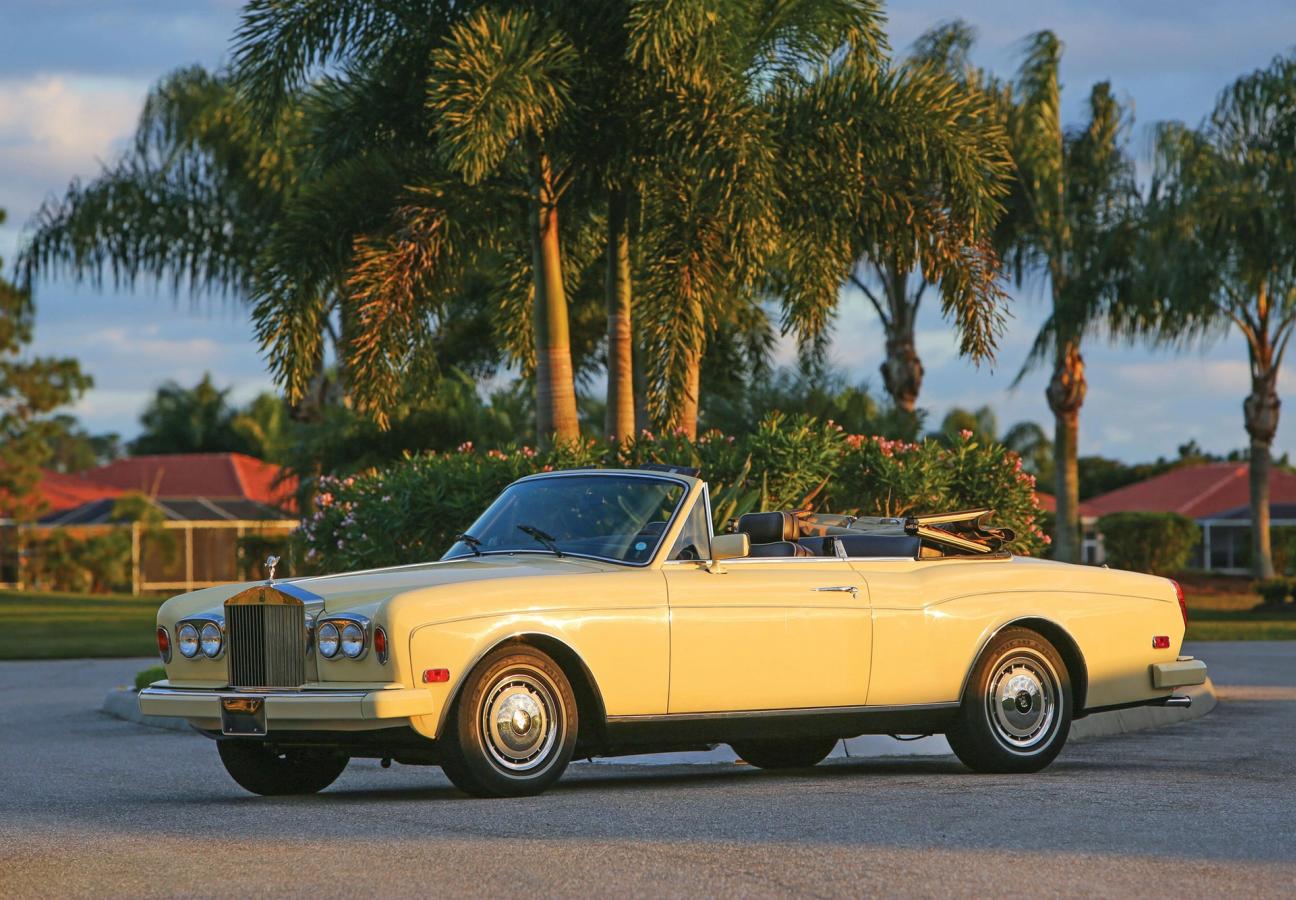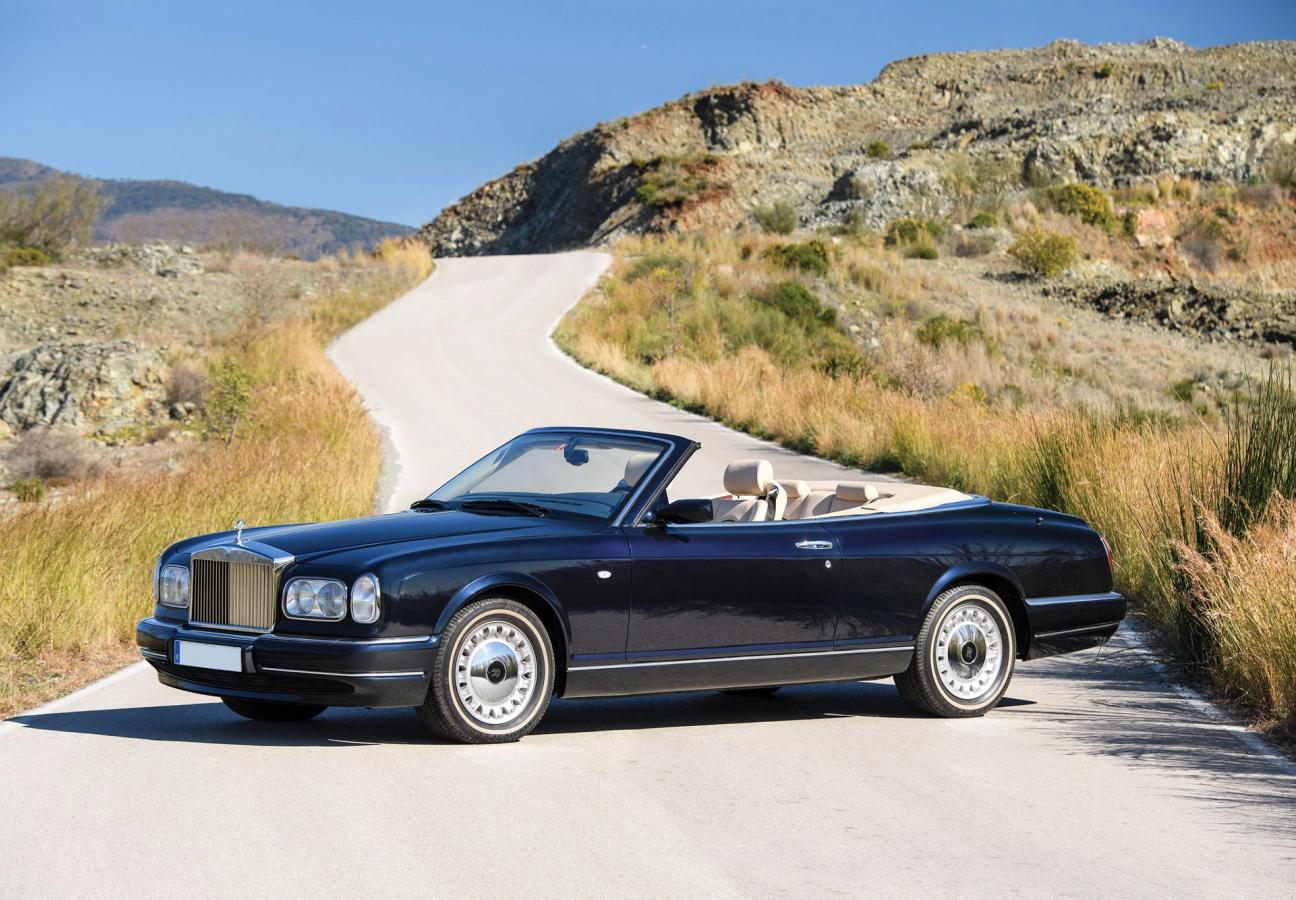

Words: Jonathan Wells
There was an advert, printed in 1986 to publicise the Rolls-Royce Corniche, that made a big, bold claim. It’s the sort of claim most advertisers would advise against running; a brave, bombastic tagline on an image of the iconic British motor. “Simply,” it read, below the statement square grille of the convertible, “the best motor car in the world”.
This spring, the motor manufacturer marks fifty lavish, hyperbolic years of the Rolls-Royce Corniche. After extensive road-testing and reviewing, the first officially sold, badged-up Corniche hit the streets in April 1971. And it went on to become a beacon of excess, with many refinements, limited editions and moneyed owners coming together to create a two-door, rear-wheel drive legend.
But the story starts before 1971. The first car to bear the Corniche name was a prototype, built with fluid lines and four doors in 1939. It was a lightweight, aerodynamic spin on the Bentley Mark V, had a body designed by George Paulin and was built by Parisian coachbuilder Carrosserie Vanvooren.
But World War II hit, and Paulin — also the innovator of the world’s first coupé-convertible — died a hero of the French Resistance. Vanvooren, similarly, was bombed out, and all records of the Corniche destroyed. And the prototype car itself? In 1940, it was to be shipped back to the Rolls-Royce factory in Derby — but never made it. On the dockside at Dieppe, on the Alabaster Coast of Normandy, it was hit by a German air-raid and completely obliterated.
The Corniche, a forgotten dream of pre-war opulence, was confined to history. Post-war austerity had no place for such a car — a glamorous motor inspired by a French Riviera pass in Monaco and named after the French word for ‘coastal road’. The Corniche was a footnote; a fantasy.
But, two decades later, the 60s swung around. Hair was longer, skirts were shorter and pockets were deeper. 1959 had seen Rolls-Royce buy heritage coachmaker Mulliner, and merge it with existing partner Park Ward. And, throughout the 60s, Mulliner Park Ward tinkered and tailored countless cars for Rolls-Royce, from the Silver Spur to the Silver Cloud. By 1966, it was the turn of the Silver Shadow.

Mulliner Park Ward took the existing car — one that had been in production since the previous year — and created a two-door variant. This fixed-head coupé, realised in 1966, was followed by a convertible version in 1967 — both designed by John Polwhele Blatchley, the car designer behind the Bentley Mark VI. Assembled in London and well-received by the motoring public, the Silver Shadow Two-Door rolled its way opulently towards the 1970s.
In 1971, after Rolls-Royce upped the Shadow’s engine to 6.75-litres, the car became the Corniche. It was a name chosen to give the motor a more sporting feel; a shorter named — and a French one, at that — sounded slicker, and added a continental feel to the British car.
"It was a name chosen for a more sporting feel..."
Other, subtler changes accompanied the new name. The radiator was raked forward, and was made half an inch deeper. Under the bonnet, the compression ratio was raised — and this, coupled with twin pipe exhausts, liberated more power from the existing engine.
After a slick launch in the South of France, the rebranding was complete. The Corniche, to the untrained motorist, may even have looked like a brand new car. For the remainder of the decade, the model was refined and revamped even further. In 1972, the suspension was retuned. 1974 saw a tape player fitted, and the wheel arches slightly flared — in suitably 70s style. By 1977, the Corniche was even mechanically revised, with rack-and-pinion steering added and a four-barrel carburettor added, along with new bumpers and air conditioning.
Autocar Magazine wrote that, “in most people’s eyes, it’s the absolute ultimate in cars”. Car Magazine, somewhat evocatively, even branded the Corniche; “The last Edwardian motor car”. And celebrities began to take notice. Despite the car coasting £17,000 — the equivalent of around £245,000 today — stars including Paul McCartney, Frank Sinatra and Tom Jones all bought one. And the list of famous fans didn’t end there. David Bowie, Elton John and Dean Martin also joined the waiting list — as did Michael Caine, Zsa Zsa Gabor and David Attenborough. The car was a success — and Rolls-Royce knew it.
In fact, demand was so high and the waiting list was so long that buyers could take delivery of their Corniche one day, and flip it for double what they paid the very next day. Even if you drove your Corniche for several years during the 70s, it would appreciate rather than lose money. The car marked a gear-shift for Rolls-Royce, who went from almost broke to reporting £6.3 million per year profits. The carmaker was churning out 350 Corniches every year, and shifting every unit quicker than the car’s top speed of 120mph.

In 1984, while the Bentley and Rolls-Royce were being merged, separated and generally maltreated by receivership and nationalisation, the former rebranded its Corniche cars ‘Continental’ — recycling a name that hadn’t been used by the marque since 1965. By 1986, the revised Corniche II was revealed (with anti-lock brakes!), followed by the Corniche II in 1989 (with air bags!) and the Corniche IV in 1992 (with four gears!).
It was a luxurious time for Rolls-Royce. And, when the last Corniche cars were created in the summer of 1995, they were uniquely turbocharged versions, a limited run of 25 models named ‘Corniche S’. And, just like that, after 26 years of dark wood, polished chrome and finely stitched leather, the Corniche was done. 1,159 Corniche Saloons and 3,316 Corniche Convertibles had rolled opulently off the production line and into motor enthusiasts’ hearts. And thus concludes the story.

Or does it? Because, in January 2000, the new millennium brought with it a new Corniche. Fitted with a turbocharged Rolls-Royce V8 and with a body modelled on the short-lived Rolls-Royce Silver Seraph, the Corniche V was the most expensive vehicle ever offered by the British carmaker at the time of its release.
Inside, it was upholstered with Connolly leather. The carpets were wool, and woven by Wilton. There were chrome gauges, exotic wood trims, ride control and a six-disc CD changer. Only 374 models were ever built — if it looks familiar, it’s because it shares a lot of DNA with the much-missed Bentley Azure — and a direct successor was never built. Instead, the Rolls-Royce Phantom Drophead Coupé was revealed in 2007 — an even more exclusive convertible from the British marque. The less expensive Rolls-Royce Dawn also followed a decade later.
It was an ignominious end for such a celebrated motor. Because the Corniche, with its decadent decor, celebrity fans and explosive origin, is a car we’re still celebrating half a century later. It’s the car that saved Rolls-Royce from the receivers, redefined luxury motoring and brought a glimmer of the French Riviera to Britain. It was, as that 1986 advert for the model oh-so humbly states; ‘Simply the best motor car in the world’.
Want more heritage British motoring? Here’s why we always forget about the Aston Martin DB4…
Become a Gentleman’s Journal member. Find out more here.


